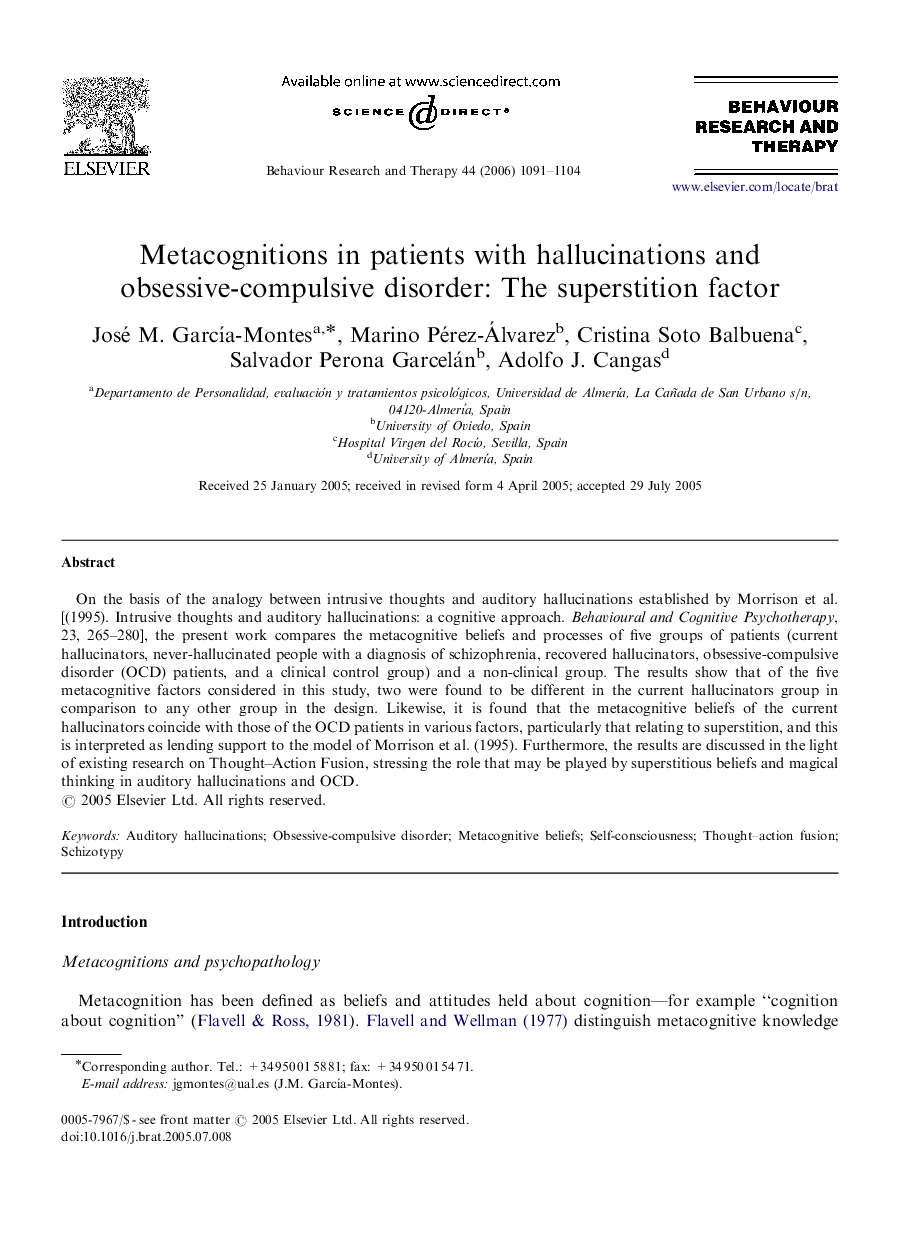| Article ID | Journal | Published Year | Pages | File Type |
|---|---|---|---|---|
| 902560 | Behaviour Research and Therapy | 2006 | 14 Pages |
On the basis of the analogy between intrusive thoughts and auditory hallucinations established by Morrison et al. [(1995). Intrusive thoughts and auditory hallucinations: a cognitive approach. Behavioural and Cognitive Psychotherapy, 23, 265–280], the present work compares the metacognitive beliefs and processes of five groups of patients (current hallucinators, never-hallucinated people with a diagnosis of schizophrenia, recovered hallucinators, obsessive-compulsive disorder (OCD) patients, and a clinical control group) and a non-clinical group. The results show that of the five metacognitive factors considered in this study, two were found to be different in the current hallucinators group in comparison to any other group in the design. Likewise, it is found that the metacognitive beliefs of the current hallucinators coincide with those of the OCD patients in various factors, particularly that relating to superstition, and this is interpreted as lending support to the model of Morrison et al. (1995). Furthermore, the results are discussed in the light of existing research on Thought–Action Fusion, stressing the role that may be played by superstitious beliefs and magical thinking in auditory hallucinations and OCD.
